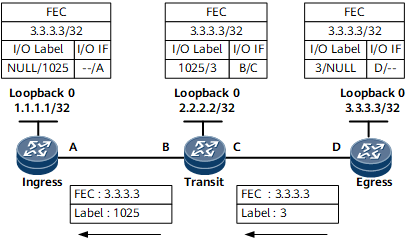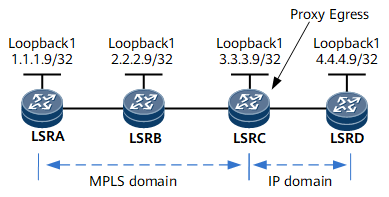Establishment of an LDP LSP
Command-based LDP LSP Establishment
Establishing an LSP is actually binding FEC with the label, then advertising this binding to the adjacent LSR on LSP.Figure 1 shows the procedure for establishing an LSP using the downstream unsolicited (DU) and ordered modes.
The process of establishing an LDP LSP is as follows:
If a label edge router (LER) on an MPLS network discovers a new direct route due to a network route change, and the address carried in the new route does not belong to any existing forwarding equivalence class (FEC), the LER creates a FEC for the address.
If the egress has available labels for distribution, it distributes a label for the FEC and pro-actively sends a Label Mapping message to its upstream transit LSR. The Label Mapping message contains the assigned label and an FEC bound to the label.
The transit LSR adds the mapping in the Label Mapping message to the label forwarding table and sends a Label Mapping message with a specified FEC to its upstream LSR.
The ingress LSR also adds the mapping to its label forwarding table. The ingress LSR establishes an LSP and forwards packets along the LSP.
Proxy Egress LSP
A proxy egress extends an LSP to a non-LDP node. The extended LSP is called a proxy egress LSP. A penultimate LSR functions as a special proxy egress when penultimate hop popping (PHP) is enabled.

